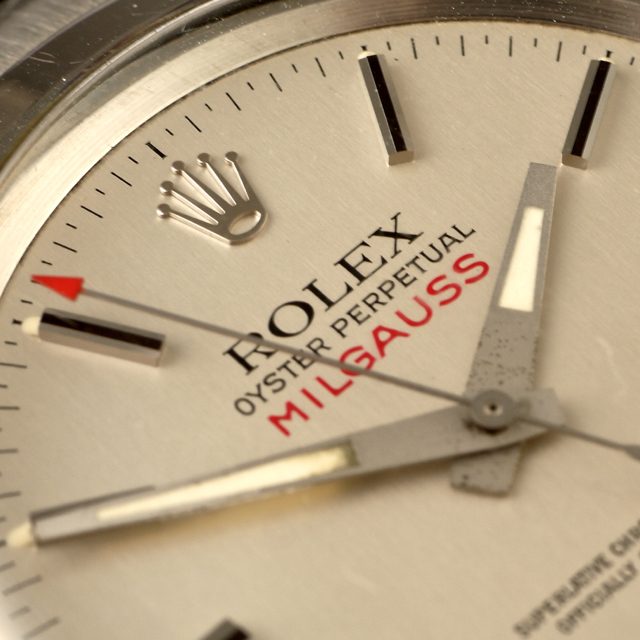
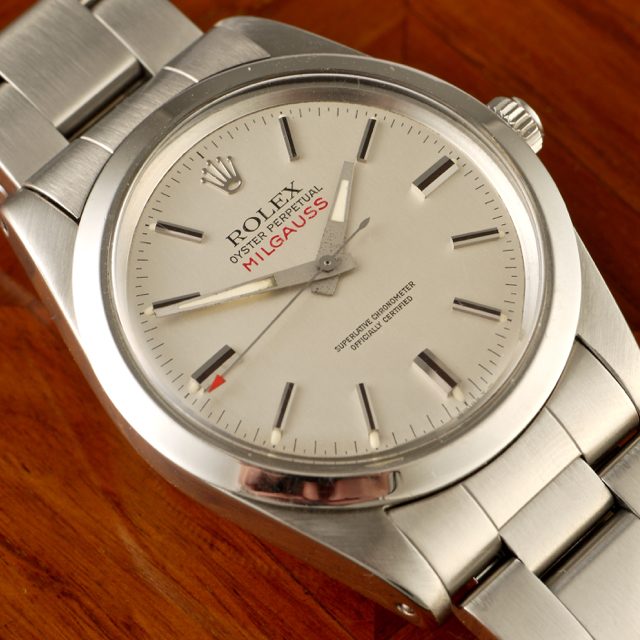
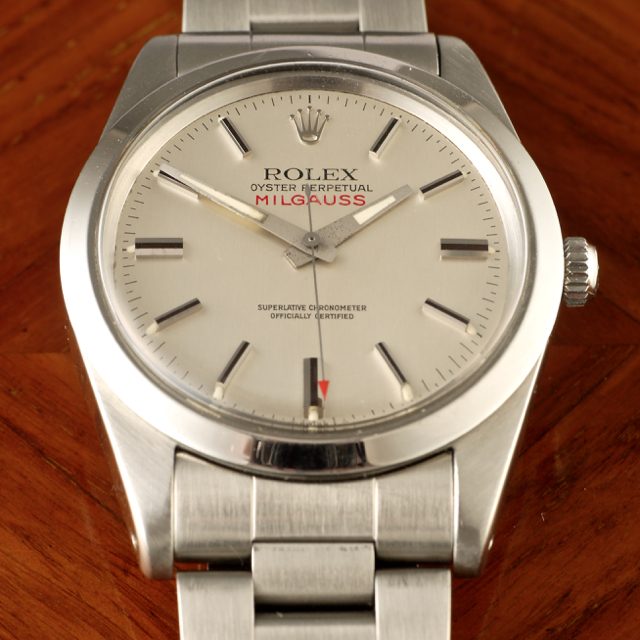
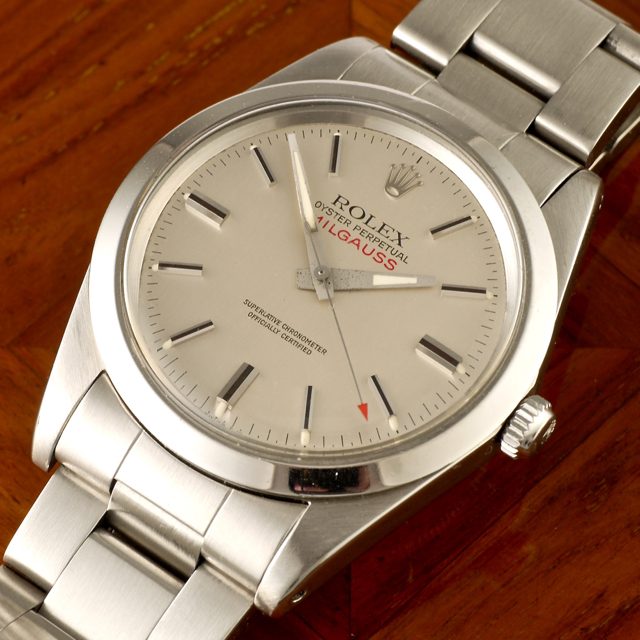
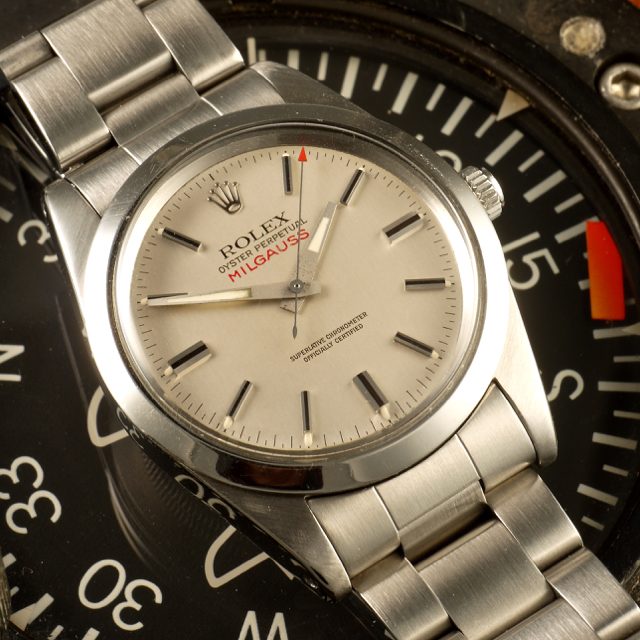
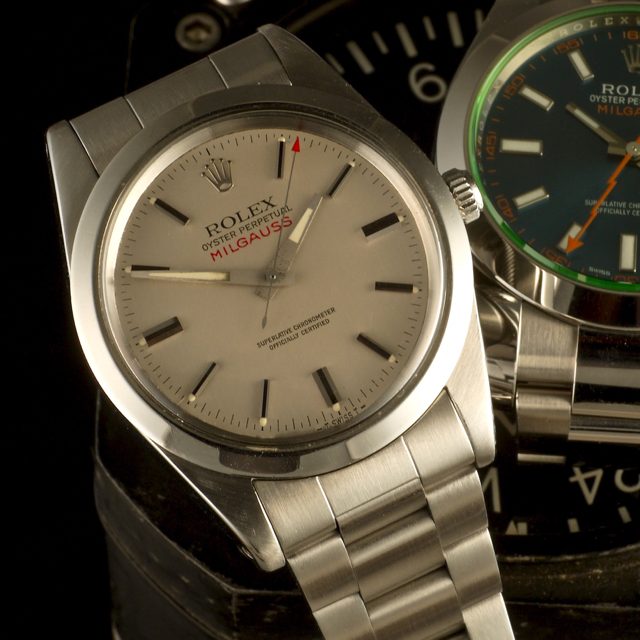
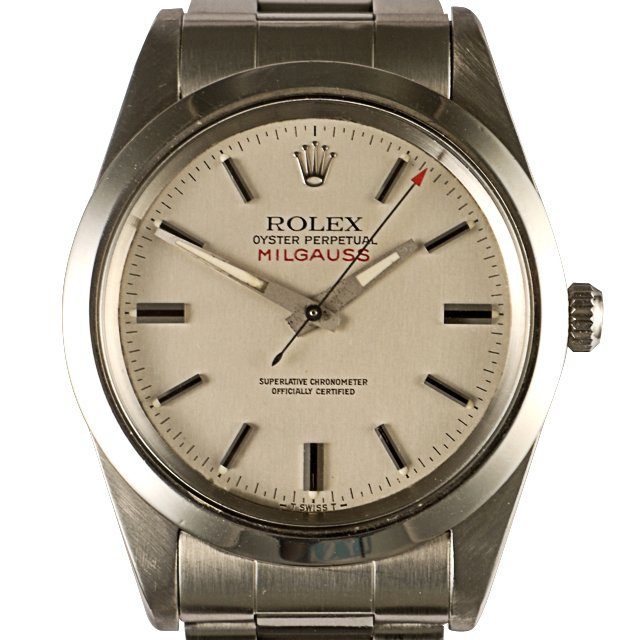
Rolex Milgauss
Soviet invasion of Afghanistan stirs world protests1979 Rolex Milgaus 1019, 38mm case silver dial.
Introduced in 1956 the name Milgauss is a compound word created by Rolex. Mil comes from Mille, French for 1000, and Gauss, a unit of measurement of magnetic fields.
Rolex Milgauss was designed as an antimagnetic watch specifically for those who worked in power plants, medical facilities, and research labs. The story goes that in the early 1950s, Rolex was approached by CERN, the Conseil Europen pour la Recherche Nuclaire, and asked to develop a wristwatch that would maintain accurate timekeeping while being exposed to powerful magnetic fields.
Before Rolex released the Milgauss, scientists and other like professionals had a serious problem; an electromagnetic field greater than 50 to 100 gauss would greatly disrupt the timing of a watch. Therefore, they either had to deal with a dysfunctional timepiece, or simply not wear a watch. However, the release of the Milgauss changed that. This was a huge technological advancement, not only for Rolex, but for the scientific community. CERN was one of the first scientific institutions to test the Milgauss, however other scientists and institutions soon followed.
The Milgauss has never been all that popular, even if it’s one of the more recognisable watches from Rolex. The Crown has sold specialist tool watches to both professionals and the general public for over 90 years, but the Milgauss never caught on. Although it wasn’t appreciated at the time by the market, the Milgauss marked an important step in Rolex history.
Rolex was founded in 1905, the goal was to create wristwatches based on 3 challenges.
The first challenge was archived in 1910 when Rolex sent its movement to the School of Horology in Bienne and awarded the worlds first wrist watch chronometer rating.
Realizing the value of a timing certificate, the company decided they would not accept any movement unless it passed a Rolex seven day battery of tests, so Rolex set the timing standard for the rest of the watch industry.
In 1926 the second challenge was achieved with the birth of the Oyster, so-named as it was as impenetrable as an oyster! Although this invention was initially thought of with skepticism and took some notable events to break this preconception, one year later Mercedes Gleitze swam across the icy waters of the English Channel wearing a Rolex Oyster on her wrist.
All three challenges were completed in 1931 when Rolex launched the first automatic watch. The idea was not new, but it was Rolex that finally perfected and patented the Perpetual self-winding mechanism.
Now the scene was set. Rolex were now producing a watch small enough to be worn on the wrist, impervious to outside elements and which required no winding from the wearer; the Rolex Oyster Perpetual.
Forbes ranked Rolex No.72 on its 2014 list of the world’s most powerful global brands. Rolex is the largest single luxury watch brand, producing about 2,000 watches per day, with estimated 2012 revenues of US$7.7 billion. Rolex SA is owned by the private Hans Wilsdorf Foundation, which is registered as a charity and does not pay corporate income taxes.
